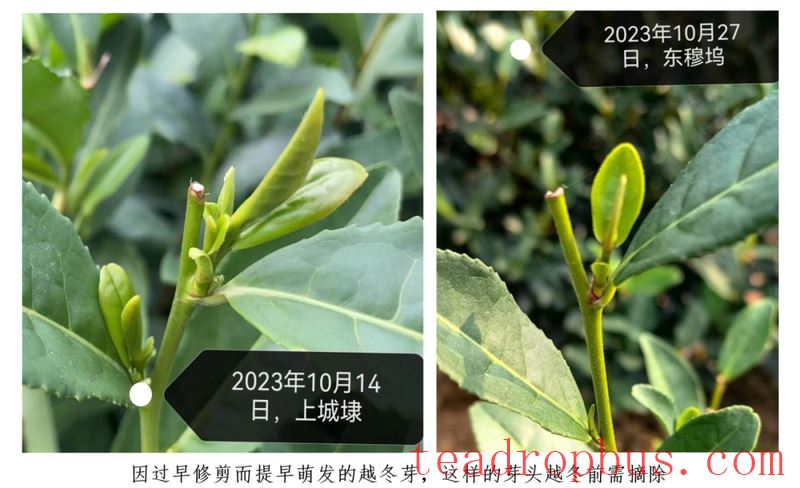According to data from the Hangzhou Meteorological Station, the average temperature at the Hangzhou station from January 1 to February 22 this year was 7.6°C, which is 2.0°C higher than the long-term average. Generally speaking, our city has experienced higher temperatures, more precipitation, and sufficient sunlight. The early meteorological conditions were conducive to the accumulation of substances within Tea buds and the improvement of quality. Currently, except for some Jiaming No. 1 (Wuniu Early) variety spring buds in Chun'an that have entered the fish scale stage, the buds of other varieties of tea trees are still in the scale stage.
The West Lake Longjing tea gardens have generally experienced cold, rainy, and icy weather over the past few days. With adequate moisture and low temperatures, as long as the tea buds have not yet unfolded their scales, there will not be a significant impact, and no measures need to be taken (there are also no effective measures available). We simply wait for warmer weather and the growth of the tea buds.
For tea gardens where pruning occurred too early last year, resulting in winter buds sprouting in the autumn, after the cold spell, it is recommended to remove any frozen tea buds to promote the growth of new buds.

Crop Forecasting
According to current weather forecasts, temperatures will remain low for the next 15 days, with more rain and further cold spells. It is not advisable to use foliar fertilizers that promote early bud sprouting, as this could lead to premature sprouting and susceptibility to late spring frosts.
According to meteorological forecasts, March will see predominantly low temperatures and overcast, rainy weather. Be cautious about rapid temperature increases towards the end of March, which can cause the buds to grow quickly. This may coincide with the harvesting period for Longjing 43 and local cultivars, potentially leading to a shortage of pickers.

Lessons Learned
1. The timing for topping and pruning in West Lake Longjing tea gardens in autumn cannot rely solely on old experience but should be adjusted based on current weather conditions. In the fall of 2025, due to abundant rainfall and warm temperatures, the tea plants grew vigorously, delaying their dormancy. Tea plants pruned according to old practices in late September or early October commonly showed premature sprouting of winter buds. These already sprouted buds, even if they avoided freezing during winter, would still be affected by the current cold spell. Therefore, do not blindly advance the pruning time; instead, adjust it based on the current weather and the nutritional status of your tea garden. If unsure, it is better to prune later rather than earlier, ideally after mid-October.

2. During the autumn and winter seasons, some nutrient-based foliar fertilizers that enhance the cold resistance of tea plants can be used to improve the frost resistance of mature leaves. Note that these should be nutrient-based foliar fertilizers, not hormone-based ones that promote early sprouting, as such fertilizers can cause early sprouting but negatively affect the quality of the Spring Tea, and their use is not recommended.